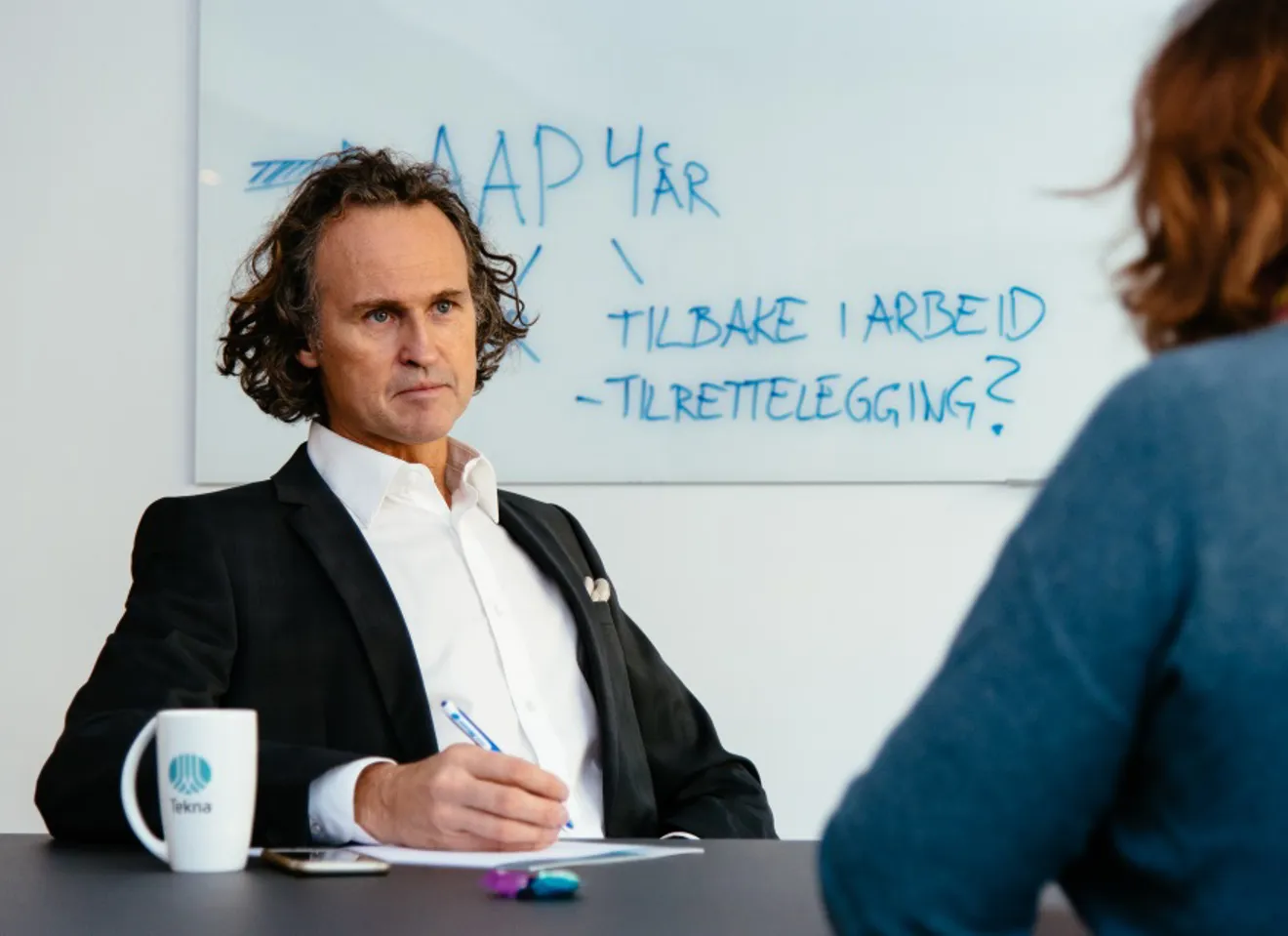
Intellectual Property Rights in Employment
The starting point is that the company you work for owns the results of your paid work. But what if you create something that is on the side of, or outside of what you are paid for? Or if what you have done for your employer can also be exploited outside of what the company does?
We look a little closer at the so-called intellectual work results often also referred to as intellectual property rights. And who owns these; you, the company or maybe both?
The typical objects for such questions are
- inventions
- works of art
- design
- trademarks
where these are a result of your creative effort. We look in the following more closely at inventions and
works of art, which our members have most questions related to.
Common to them all is that they arise in individuals and that at conception they are owned by the one who created them. However, the law is such that the employer under certain conditions may be entitled to take over rights, in whole or in part. This applies even if the employment contract does not say anything about the topic.
Tekna experiences that the employment contract or additions to this often regulate such transfer in a way that is advantageous for the company, and at the expense of the employee’s legal position. The legal situation largely allows such agreements, but Tekna asks its members to be critical of whether the company demands rights to more than it strictly needs (“must take over” or “nice to take over?”) and perhaps also for more than what corresponds to what the employee receives salary for.
A good starting point for the issue of ownership is the contractual principle of performance against performance. You get a salary, and your employer gets the results of your paid work as your consideration. Questions typically arise where you have created something that is not really covered by what you are paid to do. And where the application area for what you have made goes beyond the company’s area of operation.
The rules for transferring rights to the company and possibly right to additional remuneration are differently regulated in the provisions we have about inventions and intellectual property.
The lawyers at Tekna have long experience in advising members on how different types of employees’ intellectual property rights can be handled, both when entering into an employment contract and during later discussions about employees’ rights that affect such borderlines as indicated above.
Inventions in employment - patent rights
What is a patent?
A patent is an exclusive right to an invention under the rules of The Norwegian Patents Act (in Norwegian). Such an exclusive right is only given to technical solutions that are new compared to what is already known, and which differ significantly from this.
Who owns the invention?
The employee has in principle the same right to his invention as other inventors have. This is specified in the Law on the right to inventions made by employees / Employee Invention Act (in Norwegian)
The right is limited in practice by various provisions that give employers such rights at the expense of employees. Limitations follow from § 4 of the law and often also from the employment contract or other special regulations (for example personnel handbook). For such transfer of rights, a fee should as a starting point be given to the employee, see § 7. More about such pre-agreed waiver of rights and fee issues below.
Employee’s duty to notify
After an invention has been made, or you think you may have come up with something possibly new, the employee must under the Employee Invention Act § 5 without unnecessary delay inform the employer in writing about the invention. The company should thus be given an opportunity to consider whether it should make use of its right to take over rights to this.
If the company wants rights to the invention, it must after § 6 give written feedback to the inventor within four months after it received the notice of the invention. Upon notification and feedback according to §§ 5 and 6, e-mail can be used.
Important to comply
It is important that the parties comply with these rules on notification. Lack of clear notice and feedback from the business can lead to ambiguity and conflicts about who has the right to the invention and whether there is anything to blame the parties. Especially when the opportunities for patent protection are lost because time passes and other applications for similar innovation come first in the queue over what is new to the patent authorities.
Many employment contracts, or other supplementary agreement, state that the employer will achieve the right to take over the invention without special notice or feedback. Such agreements simplify the situation for the company and are legally valid, but have the weakness that the company often loses momentum related to assessments of whether they should bet on the invention commercially.
The rules on notification and feedback have as their purpose, beyond clarifying who has rights, that it should not take too long for a possible patent application from the company’s side. If you wait too long, the chance of patenting may be lost by another corresponding technology being patented first, thereby preventing the ability to commercially exploit the idea as an exclusive right.
The legislator’s thought is that four months should be sufficient to assess whether it is interesting to apply for a patent. The employer is therefore given a first right by law to be able to take over inventions made by employees. After that time, the employee is free to dispose of the invention, provided that the employment contract or other agreement does not give the company better rights.
Employer’s rights to take over inventions
The scope of the employer’s right to the invention depends on how close a connection there is between employment and invention, and whether the invention falls within the company’s area of operation. The law operates with three degrees of connection.
- If the invention has been made in connection with a more defined work task, it is natural that an employer who has financed and facilitated the idea development behind the invention is given the right to take over this in whole or in part.
- The invention can also be made without, or with more distant, connection to work tasks. In such cases, employers can demand to use the invention in their business.
- If the company wants to take over a more extensive right, it has a preferential right to enter into an agreement with the inventor about this. In relation to inventions that have been made outside of employment, employers have a preferential right to enter into an agreement with employees about taking over rights. It will also be a condition here that exploitation of the invention falls within the company’s area of operation.
The formal conditions for obtaining a patent are not affected by the fact that it is the employer who is the applicant. The inventors must in any case, as mentioned above, be named as inventors in the patent application. It is common to operate with own forms that document the transfer of rights to the invention between the parties in employment.
Copyright in employment
What is copyright?
Copyright is an exclusive right to “the creative work” you have made. What is subject to copyright and what it entails is regulated by the Law on copyright to works of art etc. / Copyright Act (in Norwegian). The works typically include literary, artistic or scientific productions that are an expression of a certain original and individual creative spirit effort on the part of the author, that is, which have so-called “threshold of originality”.
Such works can for example be: (see Copyright Act § 1)
- All types of texts, including both fiction and non-fiction
- Oral lectures and presentations
- Stage works, both dramatic, music-dramatic and choreographic works, pantomimes and radio plays
- Databases and computer programs (which meet the requirement for "threshold of originality")
- Building art, both drawings and models, as well as the building itself
- Maps, as well as drawings and graphic images of scientific or technical art
- Translations and other adaptations of works mentioned above
With the copyright comes the commercial rights
If you have copyright to a creative work, you have the exclusive right to produce copies of it in any form and to make the work available to the public. This is often referred to as the “commercial rights” to the work. If you are an “author” you can deny others to show or perform the work publicly or deny others to sell copies of the work without agreement with you.
Copyright, like patent law, also includes a right to be named as author / inventor. Authors also have a claim that the work should not be exploited in a way that is offensive to themselves or the work itself (the respect right). The name right and respect right constitute so-called "ideal" rights. The ideal rights cannot be transferred, and will thus always lie with you as an author. You can read more about this in Copyright - an overview.
Transfer of copyright to employer
Rules on transfer of rights in employment follow partly from the Copyright Act, but mainly from unwritten law; customary law and, as we shall see later, also to a significant extent of contractual regulation between employer and employee.
The copyright to works created in employment goes without further agreement to the employer to the extent necessary for employment to achieve its purpose. This presupposes that the development of the work is covered by the employee’s tasks in employment and that the transfer is not otherwise considered unreasonable based on the specific circumstances.
Consequently, companies do not get copyright for works created by employees in their spare time or outside what is their tasks as employees.
The principle of “necessary” -ness further implies a limitation of what companies acquire through employment: Other use of the work than what can be done by companies themselves will be retained by authors. The employer thus only gets a right of use within its own business as a starting point.
Especially about computer program
A special provision in the Copyright Act § 71, says that the rights to computer programs go to the employer unless otherwise agreed, i.e. the opposite of what otherwise applies.
The law has no other provisions on the transfer of copyright in employment.
Computer programs can be so special that they are considered to have threshold of originality as intellectual property according to § 2, second paragraph, letter l. But even if they should not have threshold of originality, they will still be covered by the rule in § 71. At the same time, such programs can also obtain patent protection. Something that “just” constitutes computer programs is usually not considered an invention, see Patent Act § 1, second paragraph.
According to § 71, and with the limitations that otherwise follow from the law, therefore, the copyright to computer programs created by a researcher at a university during the performance of tasks covered by employment or after the employer’s instructions, goes to the employer unless otherwise agreed. No publication right then applies to the author either, even if the program qualifies for patent protection. Such publication rights may however be secured in other regulations, typically in guidelines at universities and colleges.
Doubt about what employment entails of transfer of rights
In the Copyright Act, there is a specialty principle regarding the interpretation of agreements on the transfer of rights; Copyright Act § 67 second paragraph:
“When transferring copyright, the author should not be considered to have transferred a more extensive right than what the agreement clearly expresses.”
In connection with transfer of rights in employment, this means that the right to works linked to business, but which must be kept outside the author’s work tasks and expected performances according to position, falls outside the employer’s takeover right. In case of doubt whether employment includes such performances as the actual work represents, the case should be decided in favor of employees (authors).
Comparing with inventions we see that such protection of employees does not apply to what is patentable.
The difference is partly justified in the supposedly stronger personal character and connection to the author that applies to creative work compared to what normally applies to ideas of purely technical nature; for inventions.
Compensation for transfer of copyrights?
There is no requirement for a general separate compensation for transfer of copyrights in employment. Special compensation or remuneration should nevertheless be considered where it is considered reasonable, e.g. because the company has achieved an advantage that does not correspond to the salary that authors otherwise receive. It can also be an extra incentive for creative effort among employees when you see that this is specially rewarded.
The Copyright Act § 69 indeed indicates a “reasonable compensation” to authors upon transfer, but this is primarily aimed at performing artists and comparable authors. However, it can also be used for example when transferring teaching works etc.
Compensation for transfer of inventor rights
For inventions it is different than for works of art.
When the company takes over the rights to an invention, the employee is entitled to "reasonable compensation", according to Section 7 of the Employee Inventions Act. However, this does not apply where the value of the invention does not exceed what could be expected based on employee’s salary and employment relationship.
The value should be calculated discretionarily, based on the specific circumstances of the case.
There is no overview of common practice for compensation determination. There is also scanty legal practice in this area. It can therefore be difficult to estimate a reasonable compensation.
Many uncertain factors
A particularly complicating factor is that it normally takes a long time from the conception of the idea to its possible commercialisation. And during the lifetime of the patent, there will be many additional uncertainty factors, such as the market's access to competing technology. Furthermore, it is normally necessary with extensive risk-willing capital investment, as well as access to the market through an actor who knows this for the process to be crowned with success.
Setting a remuneration for the inventor at an early stage is a very uncertain exercise
Even though the technical idea is the core of the effort, the inventor’s contribution to the commercial potential may be relatively modest in total. To determine a fee for the inventor at an early stage becomes among other things for these reasons a very uncertain exercise. For this reason, § 10 of the law secures the inventor access to reopening of the fee issue if determining conditions have changed significantly.
When determining compensation according to § 7, special consideration should be given to:
- The value of the invention
- The extent of the right that the employer has taken over
- The employee’s employment conditions
- The significance that employment otherwise has had for the invention to be made
Mediation Board for Employee Inventions
If the parties do not agree on the fee issue or otherwise on the rights transfer, each party can bring the case before the Mediation Board for Employee Inventions.
The board’s task is to help the parties come up with a solution that both can live with, among other things by suggesting a balanced settlement. Tekna takes cases to the Mediation Board free of charge for its members within the framework of our offer of legal assistance. If what is considered reasonable compensation is not achieved through board treatment, the case can be brought before the courts. Note that mediation in Nemnda is not a condition for court treatment, but a voluntary arrangement.
Agreements on transfer of copyrights and inventions
Even though transfer of rights to employers applies as a general principle for all employment relationships, it is quite common to regulate this in employment contracts directly or in additional agreements to it. In some cases, the agreement expresses what otherwise applies according to legal status, so-called “background law”, as an awareness for parties.
The parties are given great freedom by legislators to enter into agreements that deviate from background law. Neither the Copyright Act nor the Patent Act and the Employees Inventions Act set limits on companies’ access to demand transferred employees’ innovation even if it should have little or nothing to do with their employment relationship. See the Employees Inventions Act § 2.
Exceptions are as mentioned the ideal rights (name right and respect right).
Typical agreed deviations from background law are that:
- everything you as an employee create while you are employed belongs to employer
- without any further assessment within a deadline
- without there being any actual connection between employment and innovation; e.g. that invention is a result of work you are instructed to perform
- Innovation that becomes known a period - e.g. one year after you have quit - should belong to your old employer, not the new one - where you actually did work that led to invention etc.
An important exception from contractual freedom is § 7 in employee inventor law, as mentioned above. An agreement in which an employee waives the right to reasonable remuneration before an invention is made is therefore legally invalid.
It is not uncommon for employers to offer newly hired employment contracts that limit employees’ rights under law, as exemplified above. Tekna are skeptical about uncritical limitation of such kind. Both because it goes directly at the expense of employee’s interests and also because it is used in cases where companies do not have any reasonable prospects based on employment to produce inventions etc.
Especially such agreements can become unreasonable where they result in the company getting full ownership, not just usage rights in its own business, to invention made far on the side of the employee’s work and responsibility areas for his salary work.
We experience that some employers in this field exploit their strong negotiating position to obtain benefits beyond the reasonable.
Note that employee inventor law is meant to be a law to protect the employee’s position
Tekna believes it can inhibit innovation and reduce employees’ opportunity to be appreciated for their creative contributions, among other things by depriving them of co-ownership of their own ideas. We believe that the solutions that the law provides generally form a satisfactory balance between the parties’ interests. It will therefore normally be a suitable solution to let the contract refer to this law’s provisions as applicable in the party relationship. If no regulation of such kind is made in the employment contract, the law will apply fully.
Tekna expects companies that want agreements that give them greater rights than what follows from background law can explain their concrete need for a deviating regulation. Note that employee inventor law is meant to be a law to protect the employee’s position. We encourage members to ask the company to justify specifically its need to take over inventions that are not related to what is necessary for work relationship to achieve its purpose.
Compare this with the balance in parties’ contractual relationship; “performance against performance”; if not invention lies within your salary work, is it then reasonable that company should take over all rights to commercialization?
Exceptions for researchers
Exceptions for positions at universities and colleges
It is assumed that the unwritten rule on transfer of rights in employment does not apply fully for scientific works created by researchers at universities and colleges in connection with their work at institution. The purely scientific purpose associated with position will be achieved by research results. Therefore, employer does not take over right to commercial exploitation according to general purpose-based main rule.
In research projects that take place in collaboration with third party, however, there will often be an explicit or implied assumption that control rights are transferred to third party, or shared with institution, or that there are other restrictions on researcher’s use of rights.
The employee has in principle the same right to his invention as other inventors have. This is specified in § 3 of the Employee Invention Act.
The right is limited in practice by various provisions that give employers such rights at the expense of employees. Limitations follow from § 4 of the law and often also from the employment contract or other special regulations (for example personnel handbook). For such transfer of rights, a fee should as a starting point be given to the employee, see § 7. More about such pre-agreed waiver of rights and fee issues below.
Universities and colleges’ right to take over inventions - the former “teacher exception”
Until January 1, 2004, teachers and scientific staff at universities and colleges were exempt from employee inventor law.
Teachers and other scientific staff at such institutions are now, with some remaining exceptions, equated with other employees.
The right to commercial exploitation of inventions, which teachers and scientific staff produce as part of their ordinary work at universities and colleges, can after change of law be claimed transferred from employees to institution.
University and college staff’s publication right
To safeguard “the free publication right”, it is however up to such employees to decide whether research result should only be published or whether patent should also be applied for on invention, see § 6. Freedom to publish does not apply in the first four months after notice has been given according to § 5. After this deadline they are given opportunity to publish their inventions freely.
If the researcher chooses to publish his invention, news requirement as patent condition will prevent patent and therefore also institution’s opportunity to establish exclusive right to commercial exploitation of invention. The condition for institution not taking over exploitation right is that researcher publishes his material within one year after institution first time was notified about existence of invention, says § 5. After this deadline they are given opportunity to publish their inventions freely.
If the researcher chooses to publish his invention, news requirement as patent condition will prevent patent and therefore also institution’s opportunity to establish exclusive right to commercial exploitation of the invention.
The condition for the institution not to take over the exploitation right is that the researcher publishes his material within one year after the institution was first notified of the existence of the invention, says § 5.
The special rules on transfer and publication aim to ensure that the researcher and institution cooperating, so that it becomes possible to obtain patenting of the inventions, without this going beyond the researcher’s opportunity to publish his results. Publishing after a patent application has been submitted does not prevent patent protection.
Note that it is common for company internal regulations (IPR policy etc.) to indicate other conditions than those referred to here.
Useful links
- Copyright - an overview
- Law on the right to inventions made by employees / Employee Invention Act (in Norwegian)
- Law on copyright to works of art etc. / Copyright Act (in Norwegian)
- The Norwegian Patents Act (in Norwegian)




